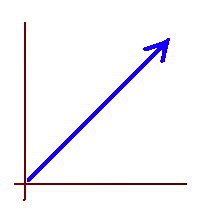Some long, time-consuming problems
The last three weeks have been very busy for me. I have been tutoring all math subjects, from fractions to Statistics and multivariate calculus.
Looking back over these past weeks it all seems kind of blurred but one topic stands out from the rest because, by coincidence, I had two sessions on the same topic with two different students, both during last week.
The topic in question is the rotation of quadratic equations in the two-dimensional coordinate (x,y)-plane. It had been a long time since I last taught this subject. It does not come up very often in my tutoring sessions, so I noticed the coincidence when I had two different students independently reviewing with me these geometrical transformations in the same week.
Also, each student separately made the same comment after we worked out problems of this type about quadratic equations: “Wow! This is a lot of work!”
They are right, it is a lot of work. The general problem starts with a quadratic equation like, for example, 5x2+2xy+10y2-12x-22y+17=0,
with a non-zero coefficient in the “xy” term.
The goal of the exercise is to find a specific angle, let’s call it θ, so that the transformed (rotated) equation in the alternate variables x’ and y’ lacks the x’y’ term.
The variables x and y are connected to x’ and y’ by means of these two equations:
x = x’ cos θ – y’ sin θ
y = x’ sin θ + y’ cos θ
Solving these problems requires several steps. I list them here, hopefully without going into too much detail:
First, finding the value of tan(2θ), the tangent of the angle double of θ.
Second, finding the measure of the angle θ itself.
Third, finding the values for cos θ, sin θ, and their squares.
Fourth, plugging those trigonometric values into the formulas below to find the new coefficients for the transformed quadratic equation:
A’ = A cos2 θ + B sin θ cos θ + C sin2 θ
B’ = 0
C’ = A sin2 θ – B sin θ cos θ + C cos2 θ
D’ = D cos θ + E sin θ
E’ = E cos θ – D sin θ
F’ = F
where A, B, C, D, E, and F are the coefficients of the original equation.
So you can see each one of these problems involves a lot of algebraic and trigonometric calculations. These problems are long, time-consuming, and you have to pay very close attention to all details to ensure an accurate result.
Anyway, in the video below you can see a room-size metallic structure (some kind of architectural sculpture) where Richard Serra, the artist, incorporated two congruent ellipses, one at the base of the room, and the other formed by the upper edge of the wall. The two ellipses are identical in shape but they are rotated with respect to each other. This is a real, tangible example of the rotation of a conic section. It is relevant to this post because quadratic equations represent conic sections, like the ellipses we see in the video. It is a very interesting structure. Take a look:
Golden iteration
-
The expression converges to the golden ratio φ. Another way to say this is
that the sequence defined by x0 = 1 and for n > 0 converges to φ. This post
wi...
1 day ago




